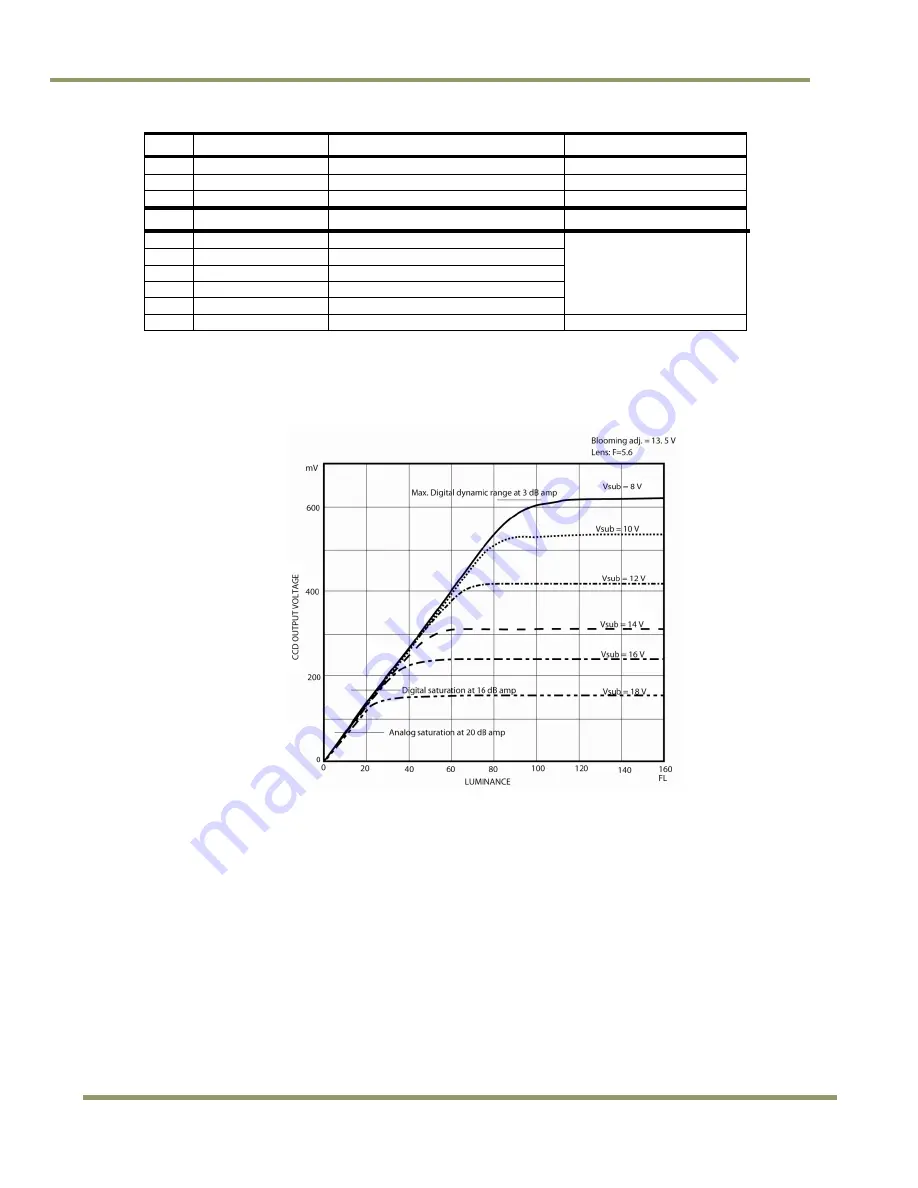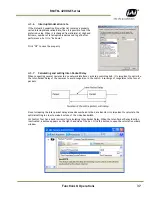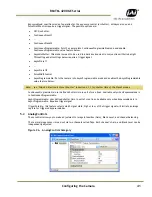
RM/TM-4200GE Series
28
Operation
Table 4
Asynchronous Mode Chart
Asyn No Shutter
Async Preset and Prog. Shutter
PWC
aA
<1 line
<1 line
6 clk
aB
9.5 line
(n+1) lines + 1024 clk
Pulse width + 1024 clk
aC
1024 clk
PIV Fixe Expo
PIV PWC
Unit
pA 6
6
pB 200
200
pC 160
160
Pixel
pD 320
320
pE 20
20
pF 1
1
Frame
3.4
Dynamic Range Control
Figure 21.
Output and Blooming
The typical interline transfer CCD has fixed noise levels based on dark current (thermal or KT noise), pattern
noise, and the operating clock speed. In general, the level of the 20 MHz pixel clock CCD at room temperature
is around 20 to 50 electrons. The maximum capacity of CCD charges is limited by the well capacity at
saturation. The range is limited by the structure and the pixel size.
The TM-4200GE uses a CCD with 7.4 µm x 7.4 µm pixels and a two-phase vertical shift register structure. The
well capacity is 40,000 electrons. The theoretical dynamic range is 40,000:30 = 1333:1 (60 dB).
A typical CCD camera does not use the full dynamic range due to the nominal gain and the output specification
such as RS-170. The typical CCD camera’s gain is set at 16 to 22 dB and the RS-170 video level is 714 mV. Using
20 dB gain for the calculation, CCD output is limited to 714/10 = 71.4 mV. Since the CCD’s saturation voltage is
400 mV to 500 mV, it uses less than 1/5 of the full dynamic range.
Machine vision and outdoor applications cannot afford to miss image information behind the saturation, which
is why the dynamic range adaptation is critical.
3.4.1
Programmable Look-Up Table (LUT) and Knee Control
The TM-4200GE has a built-in LUT (look-up table) for dynamic range control.
















































